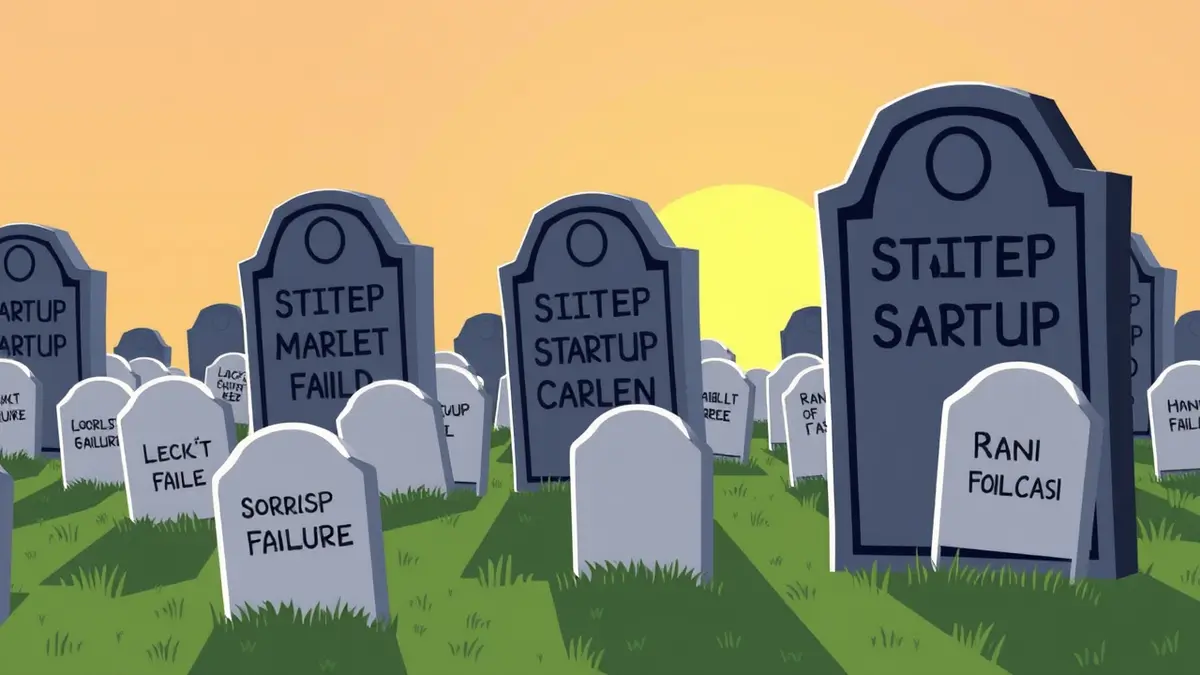Startup Failure: Lessons Learned
The entrepreneurial journey is paved with challenges, and unfortunately, startup failure is a common occurrence. While it's never the desired outcome, startup failure provides invaluable lessons that can inform future ventures and improve the odds of success for other entrepreneurs. This post dives into some of the most prevalent reasons why startups fail and how you can avoid making the same mistakes.
Common Pitfalls Leading to Startup Failure
There are many reasons why a startup might falter, but some are more frequently observed than others. Recognizing these pitfalls is the first step in mitigating their impact.
No Market Need
Perhaps the most devastating reason for startup failure is the lack of a real market need. Building a fantastic product or service is irrelevant if nobody actually wants or needs it. Thorough market research is crucial. Talk to potential customers, understand their pain points, and validate your solution before investing heavily in development.
Running Out of Cash
Cash flow is the lifeblood of any business, and startups are particularly vulnerable to running out of funds. Poor financial planning, overspending, and slow revenue generation can quickly deplete resources. Create a realistic budget, track your expenses diligently, and explore various funding options.
Not the Right Team
A strong and cohesive team is essential for navigating the challenges of a startup. A team lacking the necessary skills, experience, or dedication can quickly derail even the most promising ventures. Hire carefully, focusing on both talent and cultural fit. Consider vesting options to incentivize long-term commitment.
Poor Marketing
Even with a great product and a strong team, poor marketing can stifle growth. Failing to reach your target audience or effectively communicate your value proposition can lead to missed opportunities. Develop a comprehensive marketing strategy that includes both online and offline channels.
Getting Outcompeted
The competitive landscape is constantly evolving, and startups must be agile and adaptable to stay ahead. Ignoring competitors or failing to differentiate your product or service can leave you vulnerable to being outcompeted. Continuously monitor the market and adapt your strategy as needed.
Pricing/Cost Issues
Incorrect pricing models or unsustainable cost structures can also lead to failure. Pricing too high can deter potential customers, while pricing too low can erode profitability. Carefully analyze your costs and experiment with different pricing strategies to find the optimal balance.
Product Issues
Sometimes, the product itself is the problem. This could be due to poor design, lack of functionality, or technical glitches. Thorough testing and iterative improvements are critical to ensuring a high-quality product.
How to Avoid Startup Failure
Learning from past mistakes is crucial for future success. Here are some key strategies to help you avoid the common pitfalls of startup failure:
- Validate Your Idea: Conduct thorough market research to confirm there is a genuine need for your product or service.
- Plan Your Finances: Create a detailed budget and track your expenses carefully.
- Build a Strong Team: Hire talented individuals who are passionate about your vision.
- Develop a Marketing Strategy: Reach your target audience with a clear and compelling message.
- Stay Agile and Adaptable: Continuously monitor the market and adjust your strategy as needed.
Conclusion
While startup failure is a difficult experience, it doesn't have to be the end of the road. By understanding the common reasons for failure and taking proactive steps to avoid them, you can significantly increase your chances of success. Remember to validate your idea, plan your finances, build a strong team, develop a robust marketing strategy, and stay agile in a competitive market. The lessons learned from past failures can be the foundation for future triumphs.

Leave a Reply